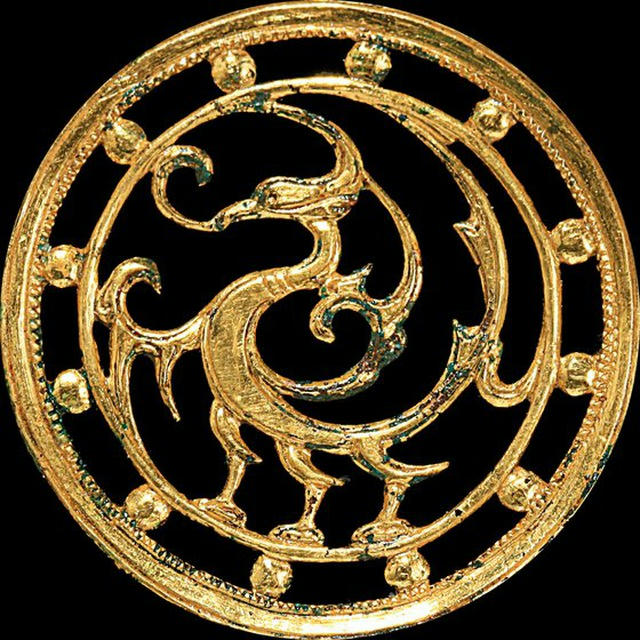
옥수수 🌽
𝙾𝚞𝚝 𝚘𝚏 𝚃𝚑𝚎 𝙼𝚊𝚒𝚗𝚜𝚝𝚛𝚎𝚊𝚖 🕊 ᴛᴡɪᴛᴛᴇʀ: https://x.com/bosupolitics?s=21&t=9XG89jWpyT2BfJy3Y5QxTA 🥥 ᴋᴀᴋᴀᴏ ɢʀᴏᴜᴘ ᴄʜᴀᴛ: https://open.kakao.com/o/g1JkJKpf
نمایش بیشتر722
مشترکین
+524 ساعت
+387 روز
+14730 روز
- مشترکین
- پوشش پست
- ER - نسبت تعامل
در حال بارگیری داده...
معدل نمو المشتركين
در حال بارگیری داده...
𝐏𝐫𝐨𝐮𝐬𝐭 𝐚𝐧𝐝 𝐁𝐞𝐫𝐭𝐡𝐨𝐥𝐥𝐞𝐭'𝐬 𝐃𝐞𝐛𝐚𝐭𝐞 𝐨𝐯𝐞𝐫 𝐭𝐡𝐞 𝐋𝐚𝐰 𝐨𝐟 𝐃𝐞𝐟𝐢𝐧𝐢𝐭𝐞 𝐏𝐫𝐨𝐩𝐨𝐫𝐭𝐢𝐨𝐧𝐬
The debate between Joseph Proust and Claude Louis Berthollet is a well-known historical episode in the development of chemistry, centered around the law of definite proportions. This law, also known as Proust's Law, states that a chemical compound always contains exactly the same proportion of elements by mass.
Joseph Proust argued that chemical compounds are composed of elements in fixed ratios by mass. According to his experiments, a compound like copper carbonate, regardless of its source, always consisted of the same proportion of copper, carbon, and oxygen. This consistency supported his view that chemical reactions produce compounds with definite and unchanging compositions.
Claude Louis Berthollet, on the other hand, believed in the concept of variable composition. He argued that the proportions of elements in compounds could vary depending on the conditions under which they were formed. Berthollet's observations, especially those related to alloys and certain solutions, suggested that elements could combine in varying ratios, leading him to challenge Proust's assertion of fixed proportions.
The debate between Proust and Berthollet lasted for several years and involved numerous experiments and theoretical arguments. Ultimately, Proust's views were vindicated through consistent experimental evidence. The discovery of the law of multiple proportions by John Dalton, which further elaborated on the idea that elements combine in specific ratios to form different compounds, provided additional support to Proust's law. Proust's law of definite proportions became a foundational principle in chemistry, reinforcing the understanding that compounds have consistent and specific elemental compositions. This principle helped pave the way for the development of modern chemical formulas and stoichiometry, and it underscored the importance of precise measurement and analysis in chemical research.
Thus, while Berthollet's ideas contributed to the broader understanding of chemical reactivity and mixture compositions, it was Proust's assertion of definite proportions that proved to be correct for true chemical compounds. This resolution was a significant step forward in the field of chemistry, confirming the predictability and consistency of chemical reactions and compositions.
Photo unavailableShow in Telegram
𝙽𝚊𝚝𝚒𝚘𝚗𝚊𝚕 𝚂𝚘𝚌𝚒𝚊𝚕𝚒𝚜𝚝 𝙿𝚊𝚛𝚝𝚢 𝚘𝚏 𝙰𝚞𝚜𝚝𝚛𝚊𝚕𝚒𝚊
𝙽𝚂𝙿𝙰 𝚠𝚊𝚜 𝚏𝚘𝚞𝚗𝚍𝚎𝚍 𝚒𝚗 𝟷𝟿𝟼𝟺 𝚋𝚞𝚝 𝚠𝚊𝚜 𝚍𝚒𝚜𝚜𝚘𝚕𝚟𝚎𝚍 𝚒𝚗 𝟷𝟿𝟽𝟽. 𝚃𝚑𝚎𝚢 𝚊𝚛𝚎 𝚠𝚎𝚕𝚕 𝚔𝚗𝚘𝚠𝚗 𝚏𝚘𝚛 𝚑𝚊𝚟𝚒𝚗𝚐 𝚝𝚑𝚎𝚒𝚛 𝚙𝚊𝚛𝚝𝚢 𝚖𝚎𝚖𝚋𝚎𝚛𝚜 𝚑𝚊𝚟𝚒𝚗𝚐 𝚋𝚎𝚎𝚗 𝚒𝚗𝚟𝚘𝚕𝚟𝚎𝚍 𝚒𝚗 𝚝𝚑𝚎 𝚋𝚘𝚖𝚋𝚒𝚗𝚐 𝚘𝚏 𝚀𝚞𝚎𝚎𝚗𝚜𝚕𝚊𝚗𝚍 𝚘𝚏𝚏𝚒𝚌𝚎𝚜 𝚘𝚏 𝚝𝚑𝚎 𝙲𝚘𝚖𝚖𝚞𝚗𝚒𝚜𝚝 𝙿𝚊𝚛𝚝𝚢 𝚘𝚏 𝙰𝚞𝚜𝚝𝚛𝚊𝚕𝚒𝚊
🤔 6😴 2🥴 1😨 1
Repost from N/a
Photo unavailableShow in Telegram
More people are sad over a literal dog dying than over the iranian president and his boyfriends
🤣 3🤗 3
نمایش همه...
UK Prime Minister Rishi Sunak calls July 4 general election
U.K. Prime Minister Rishi Sunak on Wednesday called for a general election to take place on July 4.
😭 1
Repost from N/a
Joseon Public’s Perception of the War during the World War II Period - Byeon Eun Jin
𝐋𝐚𝐯𝐨𝐢𝐬𝐢𝐞𝐫'𝐬 𝐂𝐨𝐦𝐩𝐫𝐞𝐡𝐞𝐧𝐬𝐢𝐯𝐞 𝐑𝐞𝐟𝐮𝐭𝐚𝐭𝐢𝐨𝐧 𝐨𝐟 𝐭𝐡𝐞 𝐏𝐡𝐥𝐨𝐠𝐢𝐬𝐭𝐨𝐧 𝐓𝐡𝐞𝐨𝐫𝐲
Lavoisier is renowned for his comprehensive refutation of the phlogiston theory. This theory, initially proposed by the German chemist Becher, was regarded as a sacred doctrine at the time. Becher argued that matter was composed of water and three kinds of earth. Another German chemist, Stahl, named the oily earth "phlogiston." He theorized that when a person died, phlogiston would escape, equating it with the soul. Consequently, refuting the phlogiston theory was seen as an act of sacrilege. The core of the phlogiston theory was the belief that the presence of phlogiston in a substance was what caused it to burn.
However, Lavoisier, through his experiments with mercuric oxide, proved that it was oxygen, not phlogiston, that facilitated combustion. When metals like tin or mercury are burned, their mass actually increases, directly contradicting the phlogiston theory. This discovery was groundbreaking at the time. Moreover, Lavoisier demonstrated through water decomposition experiments that if steam is prevented from escaping and heated, the amount of water does not decrease. This proved that matter is neither naturally created nor destroyed and that mass is always conserved.
Because of this, Lavoisier is often called the father of modern chemistry for advocating the law of conservation of mass. There are some who claim that the Russian scientist Lomonosov discovered this law first. However, since France's influence was much stronger than Russia's at the time, Lomonosov's claims received less recognition. This situation is similar to Gutenberg's metal type being more famous than Korea's Jikji, which was invented much earlier but is less well-known.
Photo unavailableShow in Telegram
Does anybody still remember this? 1 year ago by the way
00:07
Video unavailableShow in Telegram
“𝙋𝙧𝙚𝙨𝙞𝙙𝙚𝙣𝙩 𝙛𝙤𝙧 𝙇𝙞𝙛𝙚? 𝙏𝙝𝙖𝙩 𝙨𝙤𝙪𝙣𝙙𝙨 𝙜𝙤𝙤𝙙。 𝙈𝙖𝙮𝙗𝙚 𝙬𝙚’𝙧𝙚 𝙜𝙤𝙣𝙣𝙖 𝙝𝙖𝙫𝙚 𝙩𝙤 𝙩𝙧𝙮 𝙞𝙩。 𝙈𝙖𝙮𝙗𝙚 𝙬𝙚’𝙧𝙚 𝙜𝙤𝙣𝙣𝙖 𝙋𝙧𝙚𝙨𝙞𝙙𝙚𝙣𝙩 𝙛𝙤𝙧 𝙇𝙞𝙛𝙚…”
- 𝐃𝐨𝐧𝐚𝐥𝐝 𝐓𝐫𝐮𝐦𝐩 -
🔥 2
